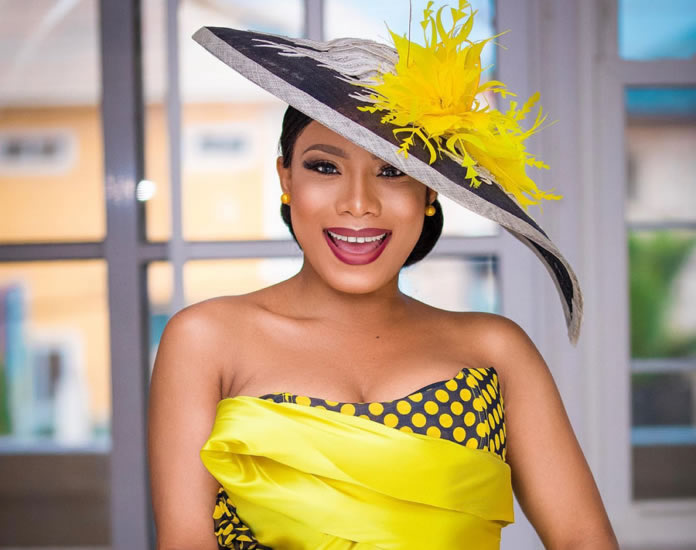The Most-Asked Questions About Hair Weaves And Wigs Answered
- Home
- The Most-Asked Questions About Hair Weaves And Wigs Answered

The Most-Asked Questions About Hair Weaves And Wigs Answered
 They say variety is the spice of life. When it comes to hair, changing it up as and when you please has never been easier.
They say variety is the spice of life. When it comes to hair, changing it up as and when you please has never been easier.
Ever wondered how the likes of Kylie Jenner can go from a blonde bob to those long pastel pink ends overnight – wig.
How about Rihanna going from a flipped-out red bob to waist-length jet black locks – wig.
Even Naomi Campbell’s envious slick straight middle-parted hair that runs all the way down to her hips – you got it, wig.
Wigs and weaves have become so popular in this day in age, you don’t need to have long pockets or celebrity status to be able to join the hair switch-up tribe in order to keep your hair constantly new and fresh.
Although wigs have grown in popularity the last few years as they become more affordable, more innovative and realistic looking and just generally more accessible, weaves are still the hair protective style of choice for many women.
Here, we answer the most-Googled questions about weaves and wigs. Take note…
What does the process of getting a weave/wig entail?
The process of getting a bespoke wig or weave involves using bundles and a lace system to construct the wig or weave on the individual’s head. The client’s hair is braided up to allow a flat seamless base, and then bundles are carefully attached using a specialised stitching method to the base.
Wigs require an additional spandex cap in order to make the wig comfortable and removable. Depending on the type of lace system, a temporary hold gel is then used to set the lace frontal system, which can either be a full lace frontal or lace closure.
How many different types of wigs and weaves can you get?
There are several different types of weaves on offer. The most popular is the lace frontal wig or weave, lace closure wig or weave, and the natural sew-in, which has further options such as a flip over vixen (two set partings) and a c-part (curved parting).
At Dollhouse, we have a recommended hair vendor, Hairess, who provides luxury virgin hair to purchase for our clients. They offer Peruvian velvet straight, Peruvian bodywave, Mongolian exotic curly, and Peruvian bombshell blonde hair. All hair is in bundles and has matching lace frontals and lace closures.
What is the difference between partial sew-in, flip over vixen and lace frontal wigs and weave?
Partial Natural Sew In:
This is when the majority of the hair is braided apart from a small section at the top of the head to cover the weave tracks and create a parting. Two to four bundles of weave are then sewn to the braids.
This is a great option if you are after a very natural look as your own hairline and scalp is visible.
This is a type of weave that works best if you are going to care for the hair which is left out – if not looked after properly, it can cause breakage.
Flip over vixen:
Weave tracks are applied to two to four different sections rather than braiding all of your hair back or into one beehive pattern. Your hair is left out around the edges, as well as down the middle of your hair – this gives you more versatility when it comes to styling as you can wear your hair in French braids, up in a high pony/bun, half up half down etc. The vixen weave is best done on hair that’s healthy and full and that’s roughly pony tail length for easy blending.
Lace frontal wig/weave:
A lace frontal is best used when you want to recreate the entire front hairline. It sits across the front of the head from ear to ear. This is a really good option if you suffer from hair loss on the hair edges.
A frontal can be used when creating a wig but can also be used for a weave. Wearing a frontal gives you the option of being able to wear your wig/weave in a pulled back hairstyle. This is known as a protective style, as none of your natural hair is left out.
Lace closure wig/weave:
A closure is typically 4×4 inches and is used to cover the area where the weave gets sewn in, giving the appearance of a natural hairline and scalp area. Like a frontal, it can be used when creating a wig or can be used for a weave. This is also another protective style.
How long does it take to apply a weave?
The time it takes to get a weave varies on the style you’re getting and the texture of your natural hair. At Dollhouse, we set aside three hours for each client, although it can take less/more time.
How long does it take to apply a wig?
Getting a wig involves the same process of braiding as it does for weaves, but the application part is much quicker as instead of sewing the hair wefts individually into your braids, you can just apply the wig directly and glue the lace to your scalp. You can even choose a frontal wig, which doesn’t require any glue at all and you just pop it on your head. Reducing styling time significantly in comparison to weaves.
How long can you keep your wig/weave in?
The amount of time you can keep your weave in depends on your hair type, hair texture and skin type. It also depends on the type of wig/weave you go for. Weaves have a shorter lifespan than wigs of approximately three to four weeks. Wigs can last between three weeks or several years if you keep on top of regular maintenance/reinstalling.
Does getting a wig/weave hurt?
The process of getting a wig or weave installed is entirely painless. Braiding your real hair to act as a seamless flat base may involve mild tension, as all universal braiding does.
Can i dye and style the weave as i please?
Yes, you can colour and dye luxury human hair extensions. You can also straighten, curl, style, air dry it.
Can you take your own weave out or should you go to a salon?
You can definitely take out your own weave – it’s not as hard as it may seem. When putting in a weave, the corners are doubled up with thread for security. So, if you just cut that thread, it unravels. It only takes about an hour but, again, this depends on how fast you are.
How about wigs? Am i ok to take them out by myself if they’re glued in, if so how?
Yes you can. Of course, there is a certain level of care you should take, as your edges (hair surrounding your hairline) are quite delicate. In order to preserve your hairline and baby hairs, it is best to gently remove the wig by dissolving the wig glue joining the lace to your scalp, using an emollient oil or even Vaseline (Rubbing alcohol would work too, but it’s not as gentle on the scalp). Wipe it over the glued lace and keep pressure on it for a few minutes. Then proceed to use a wet towel to gently wipe out that Vaseline or emollient oil. Repeat this step several times until the lace starts to lift and the glue is completely removed.
What are common mistakes that could ruin a lace wig?
As with any type of hairstyling. Applying wigs flawlessly does require practice. Here are a few things to look out for when perfecting your craft: Over-plucking, Over-bleaching and Over-dyeing, cutting too much lace, using unsuitable products for washing and conditioning, excessive use of heat tools, storage (wig texture will change dramatically if they are not store properly or if they are not clean when put away).
Source: Glamour
- Share
Classic Ghana
Classic Ghana brings you into a fun world of arts, entertainment, fashion, beauty, photography, culture and all things in between. Let’s explore these together!


 A pair of scissors and your dad’s, boyfriend’s or brother’s clippers is all you need to turn an old wig into a chic bob ? @chrissybales
A pair of scissors and your dad’s, boyfriend’s or brother’s clippers is all you need to turn an old wig into a chic bob ? @chrissybales





